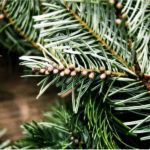grand fir (Abies grandis)
Family: Pinaceae
Categories |
Images |
|---|---|
| Form:
This is a large tree reaching 140 to 160 ft. in height and a dbh of 2 1/2 to 4 ft. It also has a dense, narrow crown. |
|
| Needles: Arrangement: spirally arranged; 2-ranked Length: 2″ long Shape: flat Other: dark yellow-green above with 2 white bands below |
Photo Courtesy: Susan McDougall, USDA NRCS Plants Database |
| Bark:
The bark has a grayish to green color with blisters when it is young. It later becomes thick, gray-brown and mottled. It also is often furrowed with ridges. |
|
| Cones:
The cones are 2 to 4″ long, barrel-shaped and the scales are deciduous, falling as seeds ripen. They have a green to purplish-green color. |
|
| Distinguishing Characteristics:
This tree has barrel-shaped cones, two ranked spindled needles, and is found around 5,000 ft. in elevation. |
|
| Range:
This is a western species. It is found around 5,000 feet in elevation. |
|
| Silvics:
This species is moderately tolerant and occurs on deep, moist, alluvial soils along streams and mountain slopes. |
|
| Ecological and Cultural Importance:
The tree is an important source of pulpwood. The wood also has a fetid odor. It is affected by spruce budworm and stringy brown-rot fungus. Various species of owl use grand fir as a habitat. Needles are eaten by grouse. |
